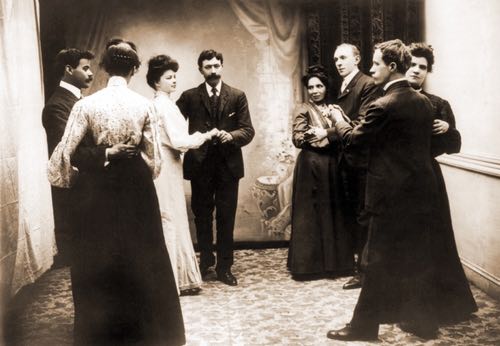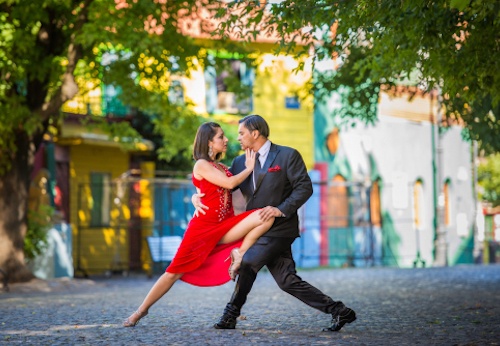One of the best parts about ballroom dancing is the connection you build with your dance partner—the way you grow together, move together, and complement one another is totally unique to each and every dancing duo. Having a partner is what makes ballroom dancing so fun and social, and the practice dates back as far as ballroom dancing’s inception.

If you’re not familiar with the history of ballroom dance, today’s post will go over how partner dancing originated and how ballroom dancing connects all kinds of cultures all over the world. You may see just how similar we all are, after all.
How ballroom dancing evolved
Partner dancing has origins as early as 1023, when German poet Ruodlieb referred to a couple dance in which a boy was trying to woo a girl, and she rejected his advances. Fast-forward to the early 15th and 16th centuries, when high-class women and men would practice couple dancing in ballrooms. This emergence of social ballroom dancing was often reserved for royalty and the privileged, whereas folk dancing was for the lower classes.

However, to say that ballroom dancing simply emerged out of nowhere would be incorrect. The truth is, partner dancing began in many different ways, depending on the culture from which each dance was born.
How cultural dances became ballroom dances
You may think you have nothing in common with Cuban slaves from the 1800s, but if you’ve enjoyed dancing to any rumba styles, you’re not as different as you might think!
Dancing has been around for centuries, and the ballroom dances we teach today were once derived from various cultures around the world. There are differences between International and American styles of dance, and even those dances were developed from outside influences. Some of the biggest ballroom dances today were not always danced in a ballroom.
Latin dances, for example, which include salsa, mambo, merengue, rumba, bachata, and the Argentine tango, came from a few hispanic and South American cultures. The Argentine tango originated in Argentina, and the merengue and cha cha have Cuban roots.

The waltz can be traced back to 16th-century Europe, where it began to appear in books and operas. As it spread from the countryside to the city, it kept the momentum and made its way from Germany to Vienna, Austria, then Britain and the U.S. (Get the full history.) The tango, on the other hand, was catapulted to popularity by a single man.
While the rumba was born out slavery in 19th-century Cuba, swing dancing had its moment in the USA during WWII. As one of our favorite dance quotes says, “Hard times require furious dancing.”
Even though some of today’s most partner dance styles originated from places all over the world, we are still able to connect with others. When communicating through a shared passion, language barriers mean nothing—especially when you’re speaking the universal language of dance.
Continuing the tradition of connecting cultures through dance
Partner dances of all kinds have spread far and wide since the moments they were created. The ballroom dance scene has come such a long way from the time it was introduced to the USA. It can feel mind-blowing to think about how Arthur Murray himself was one of the main reasons social dancing took off in the United States. Therefore, we are even prouder to be carrying on Mr. Murray’s legacy and continuing to share and connect other cultures through ballroom dance.
Not only do you learn more about the culture from which your ballroom dance was derived, but you also learn more about your fellow students. Ranging from age and interests but with one thing in common—a passion or curiosity about dance—our AMNJ students reach a new level of social comfort when they begin taking lessons.
Be a part of something bigger and try dance lessons at Arthur Murray New Jersey. Your first lesson is on us!
{{cta(‘a7d6e4e1-a911-4f2b-8b43-6210da6d93fb’)}}
Leave a Reply